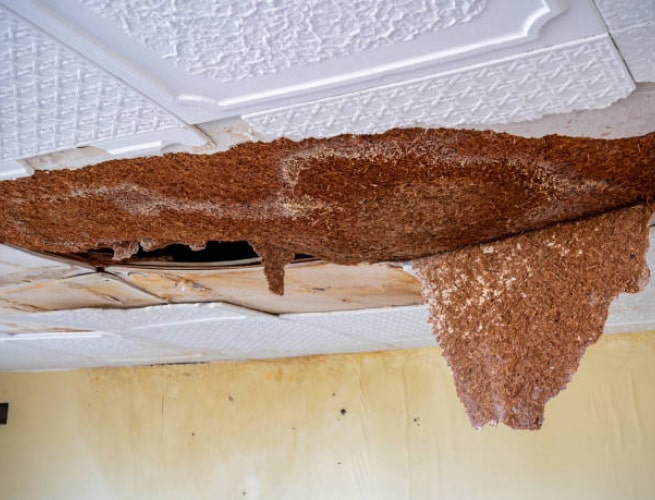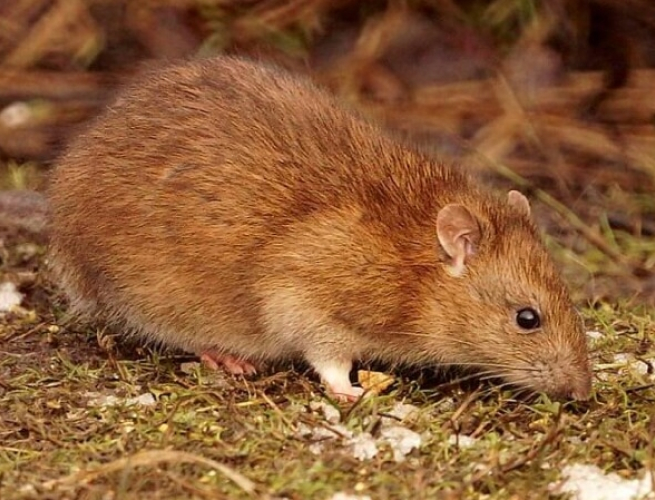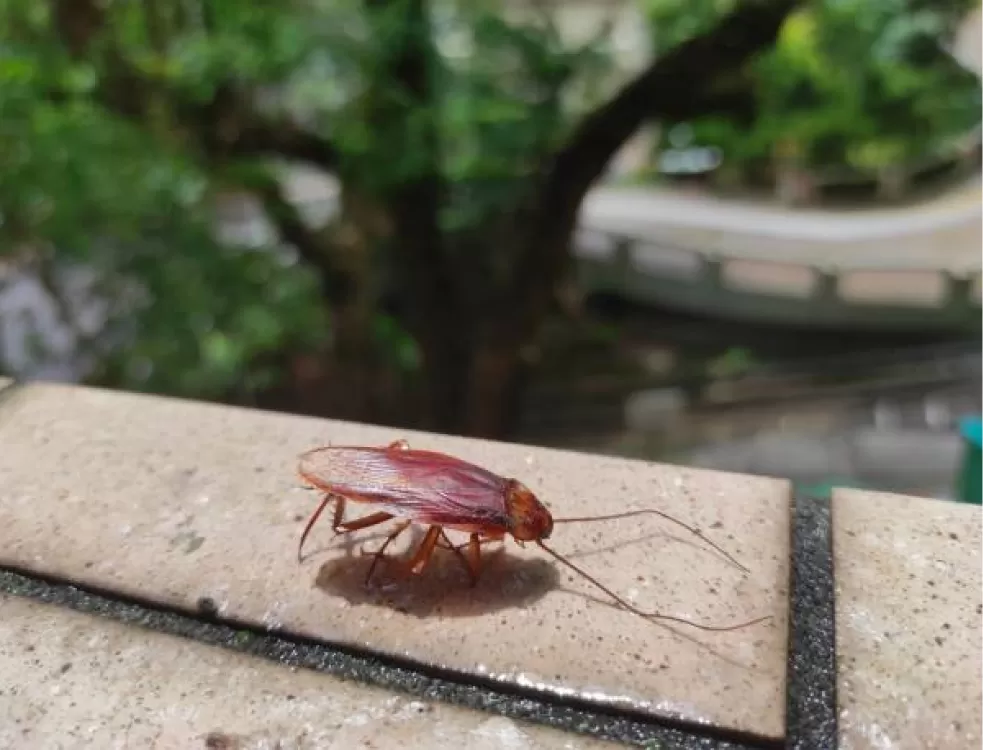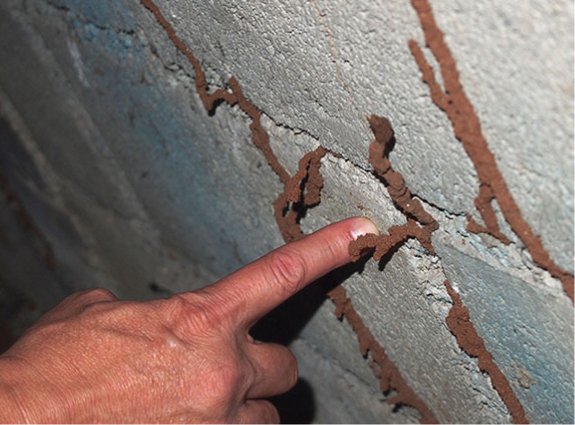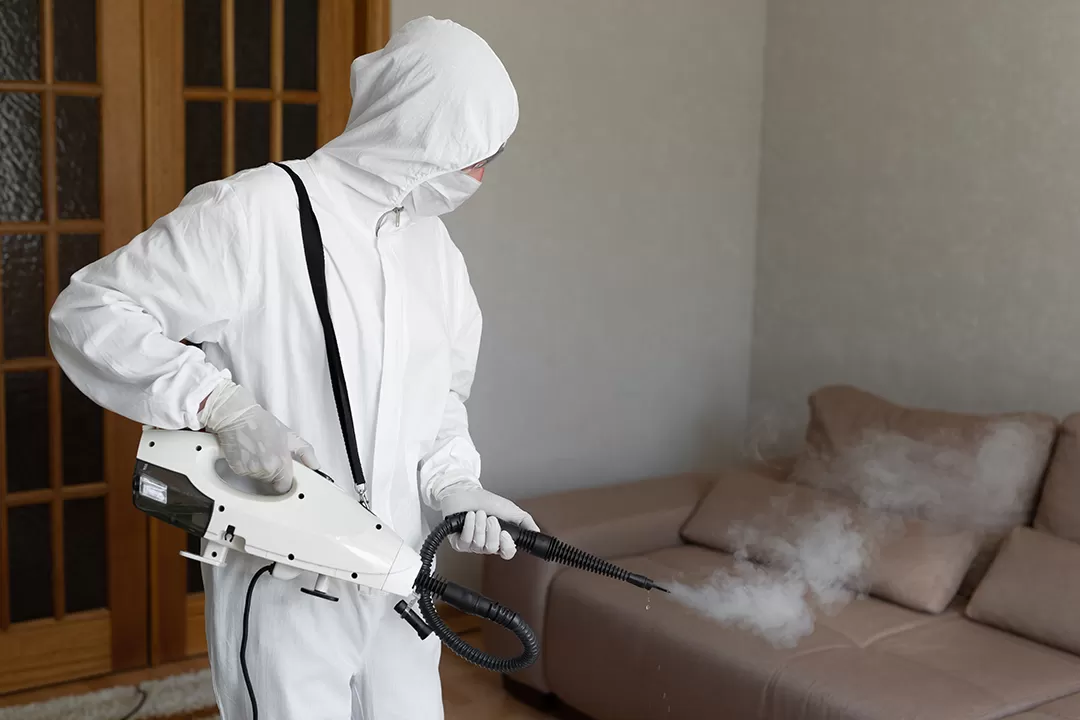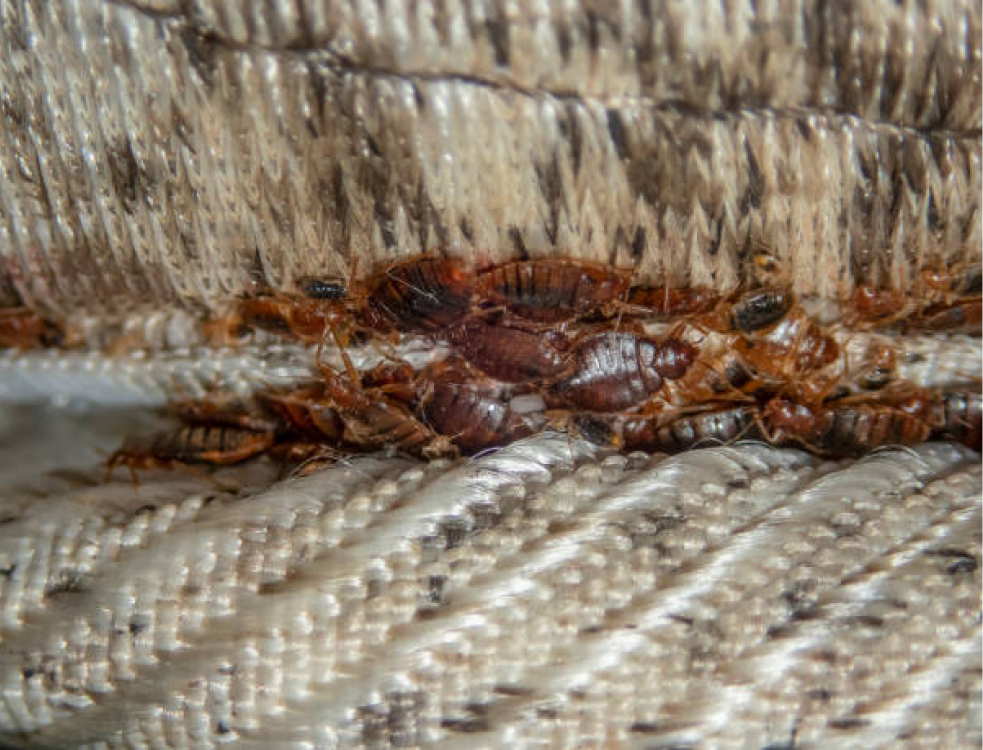Are you thinking about purchasing your dream home in Singapore? It’s worth noting that termites can swiftly turn that vision into a potential nightmare, especially given the humid climate that fosters infestations and leads to millions in annual damages, as reported by the National Environment Agency. This guide provides new homebuyers with nine reliable prevention measures from conducting professional inspections to sealing cracks—along with valuable information on common termite species, climate-related risks, and strategies for ongoing control. For homeowners who already suspect an infestation, exploring professional termite treatment Singapore options can offer timely protection. Consider partnering with Aardwolf Pestkare to safeguard your investment from pests and other challenges.
Key Takeaways:
- Schedule a professional pre-purchase termite inspection to detect hidden infestations early and avoid costly surprises in Singapore’s humid climate.
- Opt for properties with termite-resistant materials, proper drainage, and sealed entry points to minimize risks in termite-prone areas.
- Partner with experts like Aardwolf Pestkare for regular maintenance and comprehensive pest control to safeguard your home investment long-term.
Conduct a Professional Pre-Purchase Termite Inspection
If you are considering the purchase of a new home in Singapore, the initial prudent step is to arrange for a professional pre-purchase termite inspection. This process provides your prospective property with a comprehensive health assessment before you make a final commitment.
Why is this inspection so essential?
Termites can quietly erode wooden structures, resulting in repair expenses that may reach into the thousands of dollars. A qualified termite specialist conducts a thorough examination, identifying early indicators such as mud tubes along foundations or frass pellets—those small droppings—near wooden elements, which suggest active colonies.
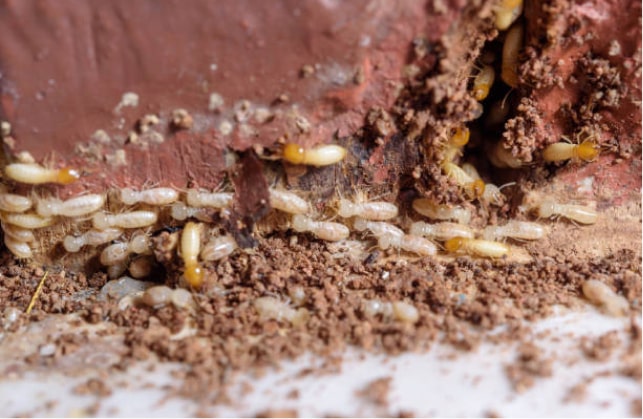
They also inspect for swarmers, the winged reproductive termites that appear during mating seasons, serving as a clear warning of potential infestations. In Singapore’s humid environment, where subterranean termites are particularly prevalent, early detection by an expert can prevent extensive structural damage.
Engaging a professional for termite control in Singapore guarantees that treatments adhere to National Environment Agency standards, employing environmentally friendly baits designed to target and eliminate colonies effectively. Research from the International Research Group on Wood Protection indicates that untreated termite infestations can diminish a property’s value by as much as 25%—a substantial risk for any prospective buyer.
| Early Sign | How Experts Spot It |
| Mud Tubes | Thin, soil-covered tunnels on walls or floors, probed for live termites |
| Wood Damage | Hollow-sounding timber when tapped, revealing internal galleries |
| Swarmers | Wings discarded near windows, indicating a nearby nest |
By consulting such a specialist, you protect your investment and gain the assurance of tranquility in your new residence.
Research Termite-Prone Areas in Singapore
Before committing to a property, it’s wise to thoroughly research termite-prone areas in Singapore. These persistent pests thrive in humid conditions and have the potential to turn your prospective home into a significant challenge.
Consider the eastern regions of the island or older HDB blocks, which often emerge as hotspots due to persistent moisture from rainfall and proximity to vegetation. According to the National Environment Agency, termites in Singapore inflict millions in damages annually, flourishing in such environments.
- Coastal areas near Sentosa or Changi face elevated risks from salty, damp soil.
- Wooded neighborhoods like Bukit Timah draw subterranean termites that tunnel underground.
- Even high-rise developments aren’t exempt if soil treatment was overlooked during construction.
Along with termites, remain vigilant about cockroaches in damp kitchens and mosquitoes breeding in stagnant water—issues highlighted as common in a 2022 study by the Singapore Pest Management Association. Understanding these risks enables you to select locations with robust pest management measures, such as newer condominiums in the drier central districts, thereby avoiding future inconveniences and expenses.
| Common Pest | Risk Area | Prevention Tip |
| Termites | Humid outskirts | Regular inspections |
| Cockroaches | Urban kitchens | Seal cracks |
| Mosquitoes | Stagnant water spots | Clear drains |
Choose Properties with Termite-Resistant Construction Materials
When house hunting, it’s wise to prioritize properties built with termite-resistant materials, such as treated wood or concrete, to keep wood-munching termite species at bay from the very start.
Imagine moving into a home where you’ve truly prevented termites from causing damage years down the road.
Choose structures that use pressure-treated lumber, infused with chemicals like borates to repel subterranean termites—the most destructive variety in many regions.
Brick or metal framing offers another strong layer of defense, since these materials hold little appeal for drywood termites that prefer moist wood.
According to a study by the National Pest Management Association, homes incorporating such materials experience up to 50% fewer infestations.
During viewings, take a close look for mud tubes along the foundations—these are classic signs of active termite species probing for entry.
Tap on wooden beams; a hollow sound may reveal internal damage you’d certainly want to steer clear of for lasting protection.
Check for warped or blistered paint, especially near ground level, as it could indicate concealed colonies.
By focusing on these key details, you’ll secure a property that protects your investment without the constant worry of pest issues.
Ensure Proper Site Drainage and Ventilation
Proper drainage and ventilation around your property are essential; they help prevent moisture accumulation, which creates an ideal habitat for termites to establish and flourish, particularly dampwood species.
Consider the risks: allowing inadequate drainage to persist is akin to extending an invitation to these wood-destroying insects. Standing water that saturates the soil can transform your foundation into a welcoming, moist refuge, where termites can settle in effortlessly.
Dampwood termites, in particular, are attracted to such damp conditions, tunneling into saturated wood as if it were an abundant food source.
To maintain a dry and inhospitable environment, emphasize improved airflow. This promotes the circulation of air, which evaporates surplus moisture and disrupts the conditions termites need to thrive before they even arrive.
While consulting a professional is advisable, you can perform these self-inspections:
- Verify that gutters channel water away from the structure—clogged gutters act as a significant attractant for termites, as noted in the EPA’s guidelines on moisture management.
- Ensure the soil is graded to slope away from the foundation, avoiding water pooling; research from the University of California indicates this can reduce termite risks by up to 50% in humid regions.
- Check vents and crawl spaces for obstructions—optimal airflow in these areas keeps wooden elements dry and discourages dampwood termites.
Conducting these routine assessments forms a key part of effective prevention, helping you avoid costly issues in the future.
Seal All Potential Entry Points and Cracks
Don’t overlook the importance of sealing all potential entry points and cracks in your new property—subterranean termites are adept at slipping through even the smallest gaps, often constructing mud tubes to reach the interior.
Picture yourself strolling around the perimeter of your home on a clear afternoon, armed with a flashlight, prepared to conduct a thorough inspection.
Begin by carefully examining the foundation and exterior walls for any fissures wider than the thickness of a pencil; these are ideal locations where subterranean termites may build their mud tubes.
- First, follow the soil line where it meets the structure, and gently scrape away the dirt to uncover any hidden tunnels that resemble flattened, earthen ribbons.
- Next, inspect areas around utility lines, vents, and door frames—termites frequently target these vulnerabilities.
- If you discover a mud tube, verify its activity by probing it with a screwdriver; active tubes will feel soft and moist.
For sealing these areas, use silicone caulk for smaller cracks or expanding foam for larger ones—apply it evenly and allow it to cure completely.
According to a 2022 study by the National Pest Management Association, such early DIY measures can prevent up to 70% of subterranean termite infestations, potentially saving homeowners thousands in repair costs.
By keeping the process straightforward, you can effectively strengthen your property’s defenses without immediately needing professional assistance.
Avoid Direct Wood-to-Soil Contact in the Property
One straightforward principle to adhere to in property design is to prevent direct contact between wood and soil, since subterranean termites construct their nests underground and dispatch foraging termites upward to feed on any adjacent timber.
Picture those persistent insects burrowing straight up from the ground—it’s essentially an open door to potential problems. Such contact creates an unobstructed pathway into your home’s framework, which can result in extensive and expensive structural damage amounting to thousands of dollars.
Research from the University of Florida’s Entomology Department indicates that subterranean termites are responsible for more than 90% of structural infestations in the southern United States, largely because they reside underground and are drawn to moisture-laden wood in direct contact with the earth.
To effectively deter them, you might consider raising wooden components or adding protective barriers. Here are some practical recommendations:
- Employ concrete footings or metal termite shields to establish a physical separation between the soil and wood.
- Choose pressure-treated lumber elevated at least 6-8 inches above ground level, in line with the EPA’s pest management guidelines.
- Include layers of gravel or sand beneath slabs, as these materials discourage tunneling—termites favor straightforward soil routes.
By adopting these elevation and barrier strategies, you can reliably interrupt the path from subterranean termite colonies, protecting your property without relying on aggressive chemical treatments.
Monitor for Early Signs of Termite Activity
Once you’re settled in, it’s important to keep a close watch for early signs of termite activity, such as droppings or the sudden emergence of flying termites—these are reproductive termites swarming to establish new colonies.
Indoors, you may notice mud tubes along walls or floors, which resemble thin, dirt-packed tunnels. It’s also wise to tap on baseboards or door frames; a hollow sound often signals hidden damage beneath the surface.
Outdoors, inspect around your home’s foundation for similar tubes or softened soil caused by their burrowing. Discarded wings near windowsills serve as another telltale sign from those swarming reproductive termites.
Additionally, be on the lookout for blistering paint or warped flooring inside, which are common indicators of moisture-dependent subterranean termites. Outdoors, check trees and mulch beds for frass pellets or gall-like growths.
As noted in a 2023 study from the University of Florida’s Entomology Department, early detection can prevent up to 90% of structural damage. If you observe any of these signs, act promptly by contacting a licensed pest control professional to evaluate and address the issue before it progresses further.
Schedule Regular Maintenance and Treatments
Establish a routine of scheduling regular maintenance and treatments, including soil treatments around your property, to ensure that termite prevention methods remain current and to deter infestations from establishing themselves.
Consider this as providing your home with an adaptive protective barrier that adjusts to seasonal changes.
You may be curious about the optimal timing for intervention—experts from the National Pest Management Association advise conducting annual inspections, particularly in humid regions where termites are more prevalent.
For soil treatments, professionals typically apply liquid barriers during drier periods to achieve uniform coverage around foundations. This forward-thinking strategy not only interrupts termite colonies but also promotes long-term termite control.
- Begin with a comprehensive perimeter inspection each spring to identify any early indicators.
- Select environmentally friendly alternatives, such as those endorsed by the EPA, which minimize chemical exposure while preserving effectiveness.
- Integrate treatments with moisture management, as research from the University of Florida indicates that moist soil draws subterranean termites three times more frequently.
Through consistent adherence to these practices, you will avoid expensive repairs in the future and maintain a termite-free environment in your home throughout the year.
Partner with Expert Pest Control Services Like Aardwolf Pestkare
For peace of mind, consider partnering with expert pest control services such as Aardwolf Pestkare, a reputable professional pest control company that provides high-quality termite control tailored to your home in Singapore.
By working with these professionals, you will have access to comprehensive pest control solutions that extend well beyond simple treatments. Picture experts performing detailed inspections with state-of-the-art tools to uncover hidden infestations at an early stage, thereby preventing expensive structural damage.
A study from Singapore’s National Parks Board (NParks) reveals that termites inflict more than SGD 100 million in annual property damage, which emphasizes the critical importance of dependable prevention measures.
They utilize environmentally friendly approaches that fully comply with local regulations, including the Pest Control Act, to ensure the safety of your family. Ongoing maintenance programs offer long-term protection for your property, steering clear of the common shortcomings of DIY methods that frequently overlook deeper problems.
Moreover, their prompt response times help ensure that pests do not gain a foothold before effective measures are implemented.
Entrusting your space to a professional pest control company like this delivers true peace of mind, as they protect what matters most to you.
What Makes Termite Prevention Essential for New Home Buyers in Singapore?
Purchasing a new home in Singapore brings undeniable excitement, yet prioritizing termite prevention is crucial, as these persistent pests can inflict extensive damage long before you settle in.
Consider the havoc wrought by a concealed termite colony: these insects devour cellulose in wooden elements, potentially transforming your valuable investment into a major financial burden.
In Singapore’s humid climate, where pest infestations are all too prevalent, proactive measures against termites spare you the considerable trouble and costs of remediation down the line, safeguarding your property’s integrity for many years ahead.
What Are the Most Common Types of Termites Found in Singapore Properties?
In Singapore properties, the most common types of termites encountered are subterranean and drywood termites, which form the primary species prevalent in the region.
To help distinguish between them, consider the following details.
Subterranean termites flourish in moist soil environments and often construct protective mud tubes to move between their underground colonies and wooden structures. They are particularly drawn to damp areas, such as foundations or locations near leaky pipes, where they inflict concealed damage that can gradually compromise the integrity of homes over time.
In contrast, drywood termites favor drier conditions and establish nests directly within the wood they consume, without any reliance on soil connections.
In Singapore’s humid climate, they commonly infest furniture or attic timbers, leaving behind frass pellets as a distinctive indicator of their presence.
According to a study conducted by the National Parks Board (NParks), these main types of termites account for more than 80% of infestations in the area, based on survey data from 2015 to 2020.
For a clearer understanding of their behaviors:
- Subterranean termites tend to swarm during the rainy seasons as they seek to establish new colonies.
- Drywood termites are more inconspicuous, methodically hollowing out wood from the inside.
Recognizing these preferred habitats is key to effective prevention—ensure areas remain dry and perform regular inspections to catch issues early.
How Does Singapore’s Climate Contribute to Termite Infestations?
Singapore’s hot and humid climate essentially rolls out the red carpet for termite infestations, making these pests incredibly common in the region. Termites thrive in such conditions and can spread rapidly, leading to significant structural damage.
The tropical environment serves as an ideal accelerator for termite populations, allowing them to multiply quickly in the warm, moist surroundings. Though small in size, termites are formidable adversaries; they effortlessly gnaw through wood and building materials, resulting in expensive repairs.
In a place like Singapore, where many homes incorporate wooden features, proactive pest management is crucial.
Key concerns include:
- Structural weakening: Termites are tiny insects that feed on wood as a food source for termites, termites feed and termites can cause and termites can also hollow out beams and supports through termite activities, posing serious risks caused by termites to building integrity and safety.
- Economic impact: A 2019 study by the National Parks Board (NParks) estimates that termite damage costs Singaporean households more than S$10 million each year.
- Health risks: Infestations caused by termites can also produce dust and termite droppings known as frass that termites leave behind, which can trigger allergic reactions due to the presence of termites.
For this reason, experts from institutions such as the National University of Singapore stress the importance of early detection of signs of termite infestation and sign of a termite infestation, as well as professional intervention to get rid of termites, eliminate termites, kill termites, and kill the termites to effectively manage these pests.
What Role Do Professional Services Play in Long-Term Termite Control?
For long-term termite control, professional termite control and professional services represent the best termite, most reliable option, and expert termite solution. A qualified termite specialist in Singapore employs advanced termite control methods, treatment methods, and control measures that surpass what a general pest control company can offer, including treatment and control in Singapore.
Consider this: entrusting your home to amateurs could prove risky, especially when experts draw on years of specialized experience tailored to Singapore’s humid climate, an ideal environment for termites where termites live, termites typically live, and termites live underground, proliferating unchecked. A genuine termite control specialist in Singapore utilizes eco-friendly solutions, such as liquid soil barriers and baiting systems used to control termites, which are far more effective than over-the-counter sprays that often miss concealed termite nests and colonies.
As outlined by the National Parks Board (NParks), licensed pest control firms must comply with rigorous standards under the Pesticides Act, guaranteeing safe and thorough eradication.
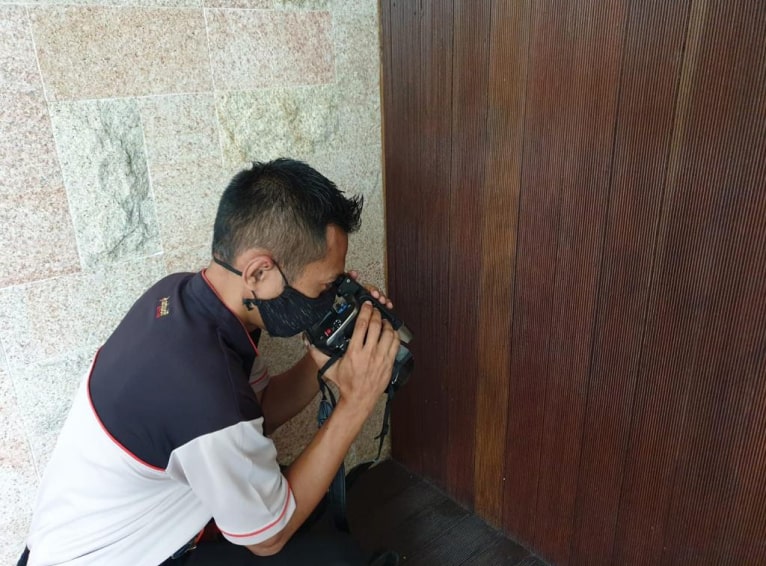
While do-it-yourself approaches, diy termite, and diy termite control may seem cost-effective initially, they frequently result in repeated termite problem, termite issue, and pest problem infestations, leading to substantial repair expenses down the line.
Instead, choose a reputable pest control company and termite control services that provides warranties and ongoing inspections and treatment, affording you reassurance without unnecessary complications, helping to prevent termites and prevent termite infestations.
Key advantages include:
- Access to professional-grade tools for comprehensive detection.
- Customized plans addressing local termite species, species of termites, different types of termites, types of termites singapore, type of termite, subterranean termites and drywood termites, common in singapore such as the pervasive subterranean termites build Coptotermes formosanus, to target subterranean termites and treat drywood termites.
- Adherence to Singapore’s environmental regulations to minimize any impact.
Why Consider Comprehensive Pest Management Beyond Just Termites?
While termites pose a significant threat, it is prudent to adopt a comprehensive approach to pest management that extends beyond them to common pests in singapore. A reputable professional pest control service and pest control services in singapore addresses all prevalent pests in Singapore through proven, effective strategies for treatment in singapore.
Consider the inconvenience of cockroaches darting across your kitchen or mosquitoes humming persistently at night—these common pests can transmit diseases and disrupt daily life. Although a simple over-the-counter spray may seem like a convenient fix, professional intervention provides the necessary expertise to identify and eliminate root causes, thereby preventing future infestations.
For example, rodents such as rats not only gnaw through electrical wiring but also propagate diseases like leptospirosis. According to reports from Singapore’s National Environment Agency (NEA), urban pests, including common pests in singapore, are associated with over 1,000 cases annually, highlighting the need for best termite treatment and overall pest control.
- Ants infiltrating pantries and spoiling meals.
- Bed bugs, often carried from travel, leading to sleepless, itchy nights.
- Flies originating from poor waste management, posing risks of food contamination.
Selecting a trusted pest control service and termite control services delivers comprehensive protection, employing environmentally sustainable methods that adhere to Singapore’s Pest Control Operators Act. Their customized inspections and ongoing follow-up services not only conserve your time but also alleviate health concerns, fostering a safer living environment for all occupants, and helping dealing with termites effectively.
| Pest Threat | Professional Benefit |
| Cockroaches | Sanitary baits reduce allergens by 80%, in line with WHO guidelines. |
| Mosquitoes | Larval control eliminates breeding sites, supporting NEA dengue prevention initiatives. |
How Can Aardwolf Pestkare’s Expertise Protect Your New Home Investment?
Aardwolf Pestkare’s specialized expertise can protect your new home investment with precise termite treatments in Singapore and termite treatment in singapore, delivering the best termite treatment and expert termite treatment solutions through comprehensive inspection and treatment to eliminate termites at their core, including ways to kill termites.
Imagine settling into your ideal home, only to discover that your home is infested with termites that are quietly undermining the wooden elements, a type of termite infestation. This is precisely where Aardwolf Pestkare’s professional termite treatment excels, employing cutting-edge baits and chemical barriers to neutralize the infestation at its source, target subterranean termites, and ward off future threats.
You can rest assured that they begin with a thorough inspection, uncovering even the most concealed colonies that might escape notice from others.
- They utilize environmentally responsible methods to treat drywood termites and subterranean termites build mud tubes, supported by National Environment Agency (NEA) research in Singapore, which demonstrates that integrated pest management can reduce termite risks by as much as 90% in urban residences, as termites live in such environments.
- Their comprehensive process not only eliminates current infestations but also provides enduring protection, potentially sparing you significant repair costs—after all, termite damage imposes an annual burden of over S$100 million on Singapore homeowners, according to Building and Construction Authority (BCA) reports.
- Backed by certified technicians, their approaches adhere to local regulations, ensuring both safety and reliability for optimal outcomes.
Entrust Aardwolf Pestkare to maintain a termite-free environment in your home, allowing you to concentrate on life’s pleasures without the concern of pest intrusions.
What Are the Legal and Financial Implications of Termite Damage in Singapore?
Dealing with termites and dealing with termite damage in Singapore can bring about significant legal and financial challenges, particularly when an undetected infestation and presence of termites leads to structural issues from the termite activities of worker termites.
Picture this: you uncover that your home’s foundation is deteriorating because those small termite workers, termites are tiny insects, have been quietly eating away at it over time, as termites feed.
What might begin as minor indicators—such as mounds of termite droppings or frass, termites build mud tubes, termites build, subterranean termites construct mud tubes, subterranean termites build mud tubes running along your walls—can rapidly develop into substantial structural problems if left unaddressed, as termite damage often does.
Homeowners frequently encounter substantial repair expenses, ranging from S$10,000 to S$50,000 or higher, based on estimates from Singapore’s Building and Construction Authority (BCA).
Under HDB regulations, owners of public housing flats are required to report any detected infestations to the authorities within 24 hours, or they may face fines of up to S$5,000 pursuant to the Infestation Control Act.
For those with private properties, the risks are no less severe; failing to act could invalidate insurance claims and even spark disputes with neighbors if the termites spread.
A 2020 study from the National University of Singapore revealed that undiscovered termite nests and termite colonies can shorten a building’s lifespan by 20-30%, transforming what seems like a small ultimate guide to termite issue into a major ordeal for property owners, especially when infested with termites.
Therefore, if you have any suspicions of a termite infestation, signs of an infestation, signs of termite infestation, type of termite infestation, or sign of a termite infestation in your home where termites live, termites typically live, it’s wise to engage professional inspectors and treatments immediately—it’s far more cost-effective than dealing with the repercussions, and termites bang their heads in communication during such termite activities.
Among the common signs of a termite infestation are, as part of this ultimate guide to termite management:
- subterranean termites build mud tubes created by worker termites, subterranean termites build, which, if ignored, can necessitate structural repairs costing over S$15,000, as termites leave evidence of their presence;
- wings or swarms from termite nests near windows, potentially requiring full fumigation at S$8,000 to S$20,000 to kill the termites and termites and keep the area safe;
- wooden elements, a common food source for termites where termites feed, that sound hollow when tapped, often leading to foundation repairs exceeding S$30,000, especially in areas where termites live underground.
Frequently Asked Questions
1. How can new home buyers identify potential termite risks in Singapore properties before purchase?
New buyers should conduct a thorough pre-purchase inspection, looking for signs such as mud tubes, discarded wings, or hollow-sounding wood. Because termites thrive in Singapore’s humid climate, hiring a professional inspection service like Aardwolf Pestkare is strongly recommended. Their specialists use advanced tools to detect hidden infestations and provide guidance to help buyers avoid post-purchase repair costs.
2. What preventive steps should new home buyers take during property inspections to avoid termites?
During inspections, check for high soil moisture and ensure proper drainage around the building foundation. In Singapore, buyers should also request a termite soil treatment report from the developer. Aardwolf Pestkare provides preventive solutions such as soil termiticide barriers, which create long-term protection against subterranean termites.
3. Why is professional termite treatment recommended for new homes in Singapore?
Singapore’s tropical climate speeds up termite activity, making DIY control ineffective. Professional services like Aardwolf Pestkare use advanced methods such as non-repellent termiticide injections and monitoring systems to eliminate and prevent termite colonies. This proactive approach can save buyers thousands in future repair costs.
4. How can new home buyers incorporate termite-resistant materials to prevent future infestations?
Selecting materials such as treated timber, borate-treated wood, concrete, or metal frames significantly reduces termite risks. Aardwolf Pestkare complements these choices with integrated pest management, including material assessment and ongoing protection to maintain a termite-resistant home.
5. What role does regular maintenance play in preventing termite infestations for new homes?
Routine actions like trimming vegetation, repairing leaks, and managing moisture levels help deter termites. In Singapore’s climate, annual professional inspections are essential. Aardwolf Pestkare offers maintenance programs with inspections and baiting systems to ensure long-term termite protection.
6. Besides termite control, what other pest services can benefit new home buyers in Singapore?
New homeowners may encounter pests such as cockroaches, ants, rodents, mosquitoes, and even birds. Aardwolf Pestkare offers comprehensive pest management tailored to urban properties, preventing cross-infestation and ensuring a healthier living environment from the start.

